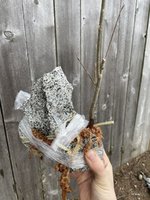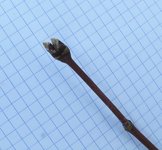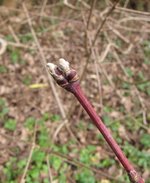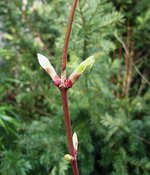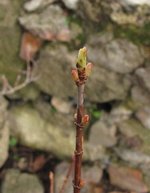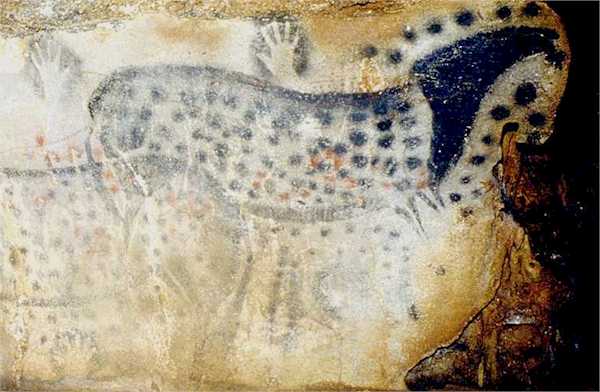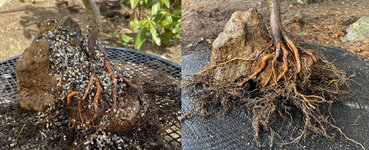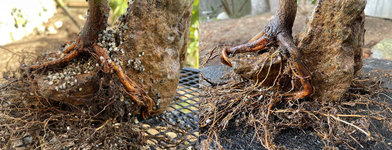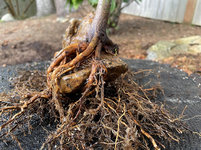cwilhelm
Sapling
I've been interested in bonsai since I was in college back in the early 2000s, but it wasn't until a couple years ago in Spring 2019 when my wife and I bought our first home that I was able to take it up as a hobby. Having a yard instead of an apartment in the city is nice! This is my first post sharing anything I'm working on, but I wanted to open up the thread as a record for where some of these trees go over the years. Please be gentle 
Last March I decided to try my hand at starting root-over-rock projects with young Japanese maples I had available. (I understand this is not the best candidate species, but I have a steady supply of 2-5 year old Japanese maples to play with that my mother in law pots up after rescuing from under a landscape tree at her house). Following the technique Harry Harrington outlined on his site (http://bonsai4me.com/AdvTech/ATRootoverrock.htm), I started two JM RoR projects and put them in the ground. Unfortunately I don't have any photos from that initial work.
Harry's technique involves binding the tree to the rock with tightly wrapped plastic wrap, which is supposed to brace the roots against the rock in a way that won't dig in, while also forcing the roots to grow out the bottom. This is in contrast to other methods I've seen, that attach the roots with wire or rafia or both, and place directly into soil on top. To prevent the higher, covered roots from drying out under the plastic wrap he advises working horticultural sand into the voids between rock and plastic. However, in practice I found this was very difficult to do once the plastic wrap was in place, and I suspected I had dry air pockets in places on one of my trees. Because I had only a few sad, spindly roots to work with originally on that tree, I resolved to dig it up and rework it this weekend in case any had died.
Here's what I found this morning after a year in the ground:
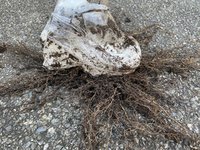
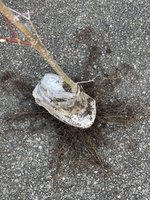
Tons of fine roots growing out in a flat plane at the base of the rock. This was very surprising, as last year I was left with very little to work with after removing the tap root -- just 5-6 spindly roots whose feet just barely reached far enough to emerge from beneath the plastic wrap. Originally, I thought that the tree was going to die, as it took longer to leaf out than my other victims last year.
Next, I unwrapped the plastic to see how things had progressed higher up and whether anything needed to be moved around. In particular, I was looking to see if any of the original roots had indeed died in air voids:
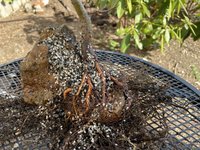
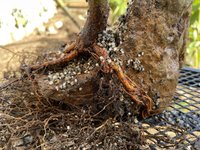
Answer: no, not at all. Not quite grasping the rock stably yet, but definitely taking its shape, and showing great progress since last year, when they were barely more than feeder roots.
I decided to wrap it back up with open access to the soil this year to encourage development of new roots higher up on the rock. I'd like to fill in some of the gaps between the major roots, especially along one side. Here she is before being replanted:
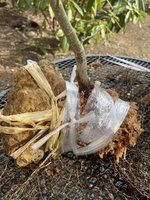
Next year I may dig it up again to see if that strategy was successful. If it was, I'll switch back back to Mr. Harrington's technique, and leave it alone in the ground for a couple years. Until then, back where she was:
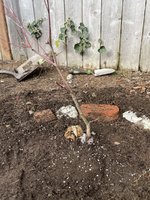
I'll share my tridents and the other JM as time allows and when I work on them next. Thanks for looking.
Last March I decided to try my hand at starting root-over-rock projects with young Japanese maples I had available. (I understand this is not the best candidate species, but I have a steady supply of 2-5 year old Japanese maples to play with that my mother in law pots up after rescuing from under a landscape tree at her house). Following the technique Harry Harrington outlined on his site (http://bonsai4me.com/AdvTech/ATRootoverrock.htm), I started two JM RoR projects and put them in the ground. Unfortunately I don't have any photos from that initial work.
Harry's technique involves binding the tree to the rock with tightly wrapped plastic wrap, which is supposed to brace the roots against the rock in a way that won't dig in, while also forcing the roots to grow out the bottom. This is in contrast to other methods I've seen, that attach the roots with wire or rafia or both, and place directly into soil on top. To prevent the higher, covered roots from drying out under the plastic wrap he advises working horticultural sand into the voids between rock and plastic. However, in practice I found this was very difficult to do once the plastic wrap was in place, and I suspected I had dry air pockets in places on one of my trees. Because I had only a few sad, spindly roots to work with originally on that tree, I resolved to dig it up and rework it this weekend in case any had died.
Here's what I found this morning after a year in the ground:


Tons of fine roots growing out in a flat plane at the base of the rock. This was very surprising, as last year I was left with very little to work with after removing the tap root -- just 5-6 spindly roots whose feet just barely reached far enough to emerge from beneath the plastic wrap. Originally, I thought that the tree was going to die, as it took longer to leaf out than my other victims last year.
Next, I unwrapped the plastic to see how things had progressed higher up and whether anything needed to be moved around. In particular, I was looking to see if any of the original roots had indeed died in air voids:


Answer: no, not at all. Not quite grasping the rock stably yet, but definitely taking its shape, and showing great progress since last year, when they were barely more than feeder roots.
I decided to wrap it back up with open access to the soil this year to encourage development of new roots higher up on the rock. I'd like to fill in some of the gaps between the major roots, especially along one side. Here she is before being replanted:

Next year I may dig it up again to see if that strategy was successful. If it was, I'll switch back back to Mr. Harrington's technique, and leave it alone in the ground for a couple years. Until then, back where she was:

I'll share my tridents and the other JM as time allows and when I work on them next. Thanks for looking.

